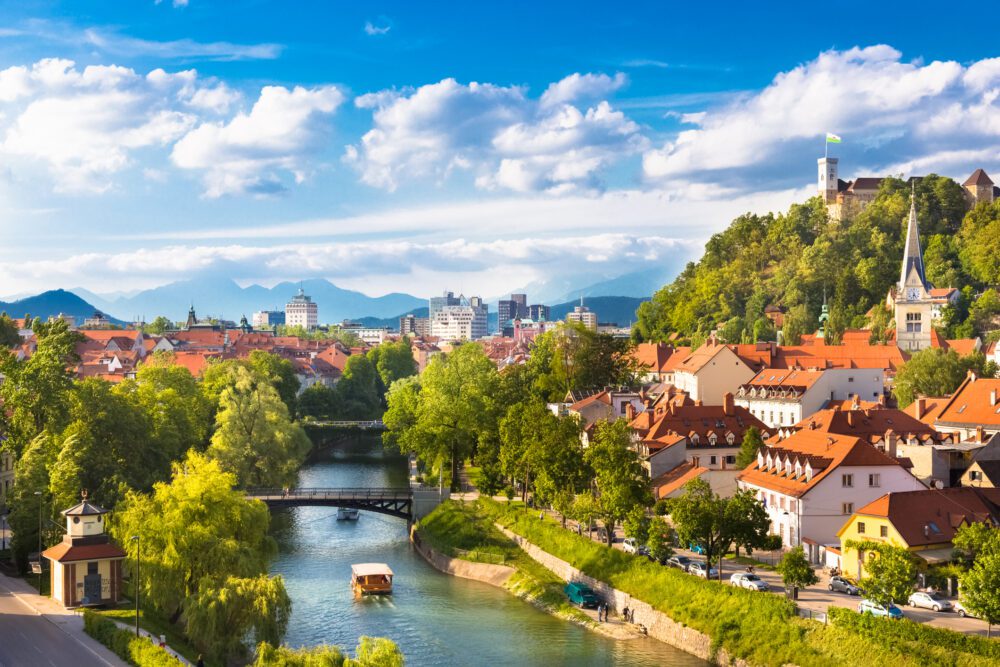
Introduction
Nestled at the crossroads of Central Europe, Ljubljana, the capital of Slovenia, is a hidden gem waiting to be discovered. With its picturesque old town, charming riverfront, and vibrant cultural scene, Ljubljana offers a delightful blend of historic charm and modern allure. Steeped in history that dates back to Roman times, Ljubljana has evolved into a dynamic city that seamlessly combines its rich architectural heritage with contemporary urban amenities. From its iconic medieval castle perched atop a hill overlooking the city to its bustling outdoor markets and lively cafe culture, Ljubljana exudes a sense of timeless charm that captivates visitors from around the world.
Beyond its architectural marvels and scenic beauty, Ljubljana is a city brimming with excitement and opportunity. With its thriving arts scene, bustling nightlife, and diverse culinary offerings, there’s no shortage of things to see and do in Slovenia’s vibrant capital. Whether you’re wandering the cobblestone streets of the old town, exploring the lush green spaces along the riverbanks, or immersing yourself in the city’s rich cultural heritage, Ljubljana offers an unforgettable experience that will leave you enchanted and eager to explore more. With its welcoming atmosphere and boundless charm, Ljubljana is truly a destination that delights at every turn, making it a must-visit for travellers seeking an authentic European experience.
Table of Contents
Map of the Best Things to Do in Ljubljana
Ljubljana Castle

Perched majestically atop a hill overlooking the historical centre of Ljubljana, Ljubljana Castle is an iconic symbol of the city’s rich history and architectural heritage. Originally built in the 11th century as a medieval fortress to defend against invasions, the castle has undergone numerous renovations and transformations over the centuries. Today, it stands as a beautifully preserved cultural landmark, offering visitors a glimpse into Slovenia’s storied past. The castle’s sprawling complex encompasses a range of attractions, including museums, galleries, and outdoor spaces, making it a must-visit destination for history buffs and culture enthusiasts alike.
To reach Ljubljana Castle, visitors can either take a leisurely stroll up the hillside or hop aboard the funicular railway for a scenic ride to the top. Once there, be sure to explore the castle’s interior, which houses a variety of exhibits showcasing the city’s history, art, and archaeology. Don’t miss the opportunity to climb the castle’s iconic tower for panoramic views of Ljubljana’s skyline and the surrounding Julian Alps. Additionally, the castle grounds feature charming cafes, souvenir shops, and outdoor seating areas, perfect for relaxing and soaking in the atmosphere.
Triple Bridge (Tromostovje)
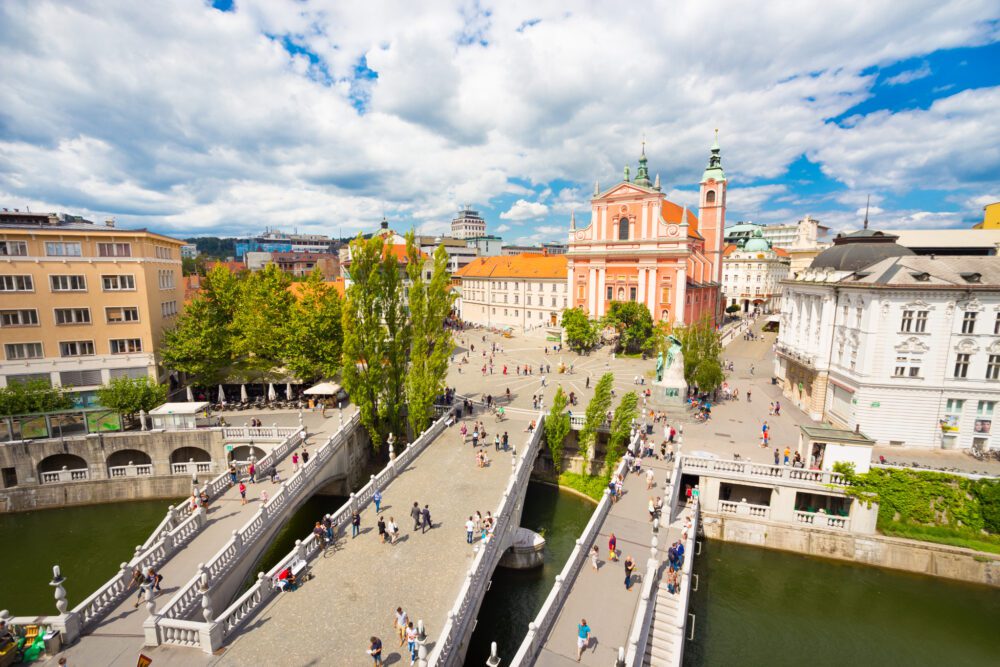
The Triple Bridge, or Tromostovje in Slovenian, is one of Ljubljana’s most iconic landmarks, located in the heart of the city’s historic centre. Originally built in the 19th century as a single stone bridge spanning the Ljubljanica River, the Triple Bridge was later expanded and transformed into its current form by architect Jože Plečnik in the early 20th century. The bridge consists of three parallel spans, with the central bridge reserved for pedestrians and flanked by two smaller bridges for cyclists and pedestrians, creating a seamless connection between the bustling Preseren Square and the charming old town. Adorned with elegant balustrades, decorative lamps, and stunning views of the river and surrounding architecture, the Triple Bridge is a beloved symbol of Ljubljana’s beauty and historic charm.
To fully appreciate the beauty and significance of the Triple Bridge, take a leisurely stroll across its spans, pausing to admire the intricate details of Plečnik’s design and the picturesque scenery of the Ljubljanica River below. Be sure to visit the bridge at different times of the day to experience its changing ambience, from the hustle and bustle of daytime crowds to the tranquil glow of evening lights reflecting off the water. For a unique perspective, consider crossing the Triple Bridge at sunset, when the sky is painted in shades of pink and gold, casting a warm glow over the cityscape.
Preseren Square
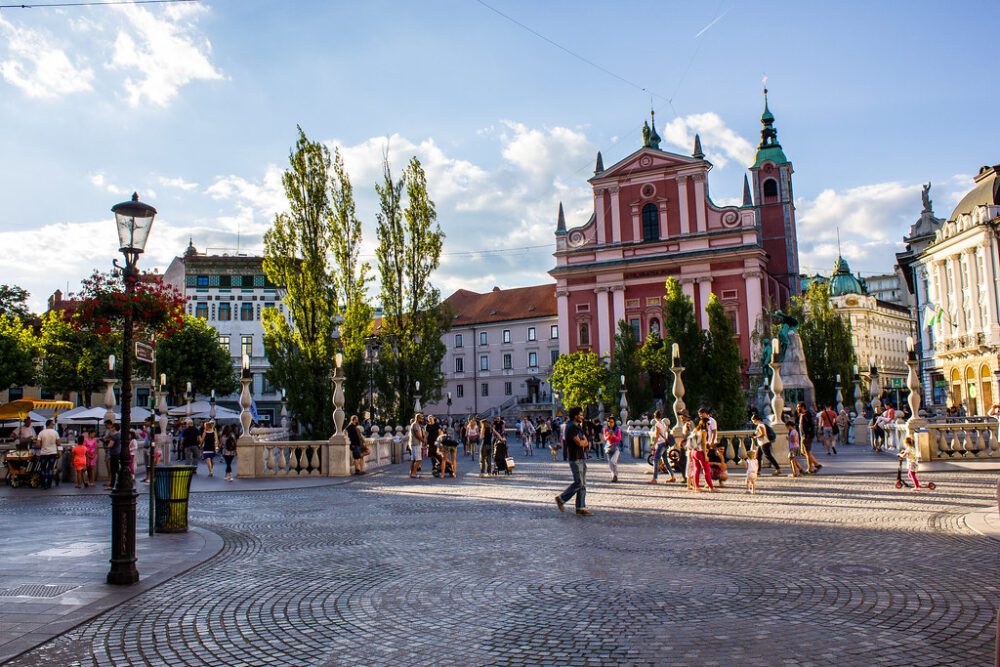
Preseren Square, named after Slovenia’s greatest poet, France Preseren, is the vibrant heart of Ljubljana and a focal point for both locals and visitors alike. Situated at the crossroads of the old town and modern Ljubljana, the square is surrounded by elegant buildings, lively cafes, and bustling pedestrian streets. It serves as a popular gathering place for cultural events, festivals, and street performances throughout the year. Dominating the square is the striking bronze statue of France Preseren, a beloved figure in Slovenian literature, which stands as a testament to the country’s rich cultural heritage. Preseren Square is not only a place of historical significance but also a vibrant hub where locals and tourists come together to soak up the lively atmosphere and vibrant energy of the city.
When visiting Preseren Square, take some time to relax and people-watch at one of the many cafes that line the perimeter of the square. From here, you can enjoy views of the iconic Triple Bridge, which connects the square to the old town across the Ljubljanica River. Be sure to visit the square in the evening, when it comes alive with twinkling lights and a lively atmosphere, creating the perfect backdrop for a leisurely stroll or romantic evening out. Additionally, keep an eye out for special events and cultural performances that often take place in the square, providing a unique opportunity to experience Ljubljana’s vibrant arts scene firsthand.
The Skyscraper (Nebotičnik)
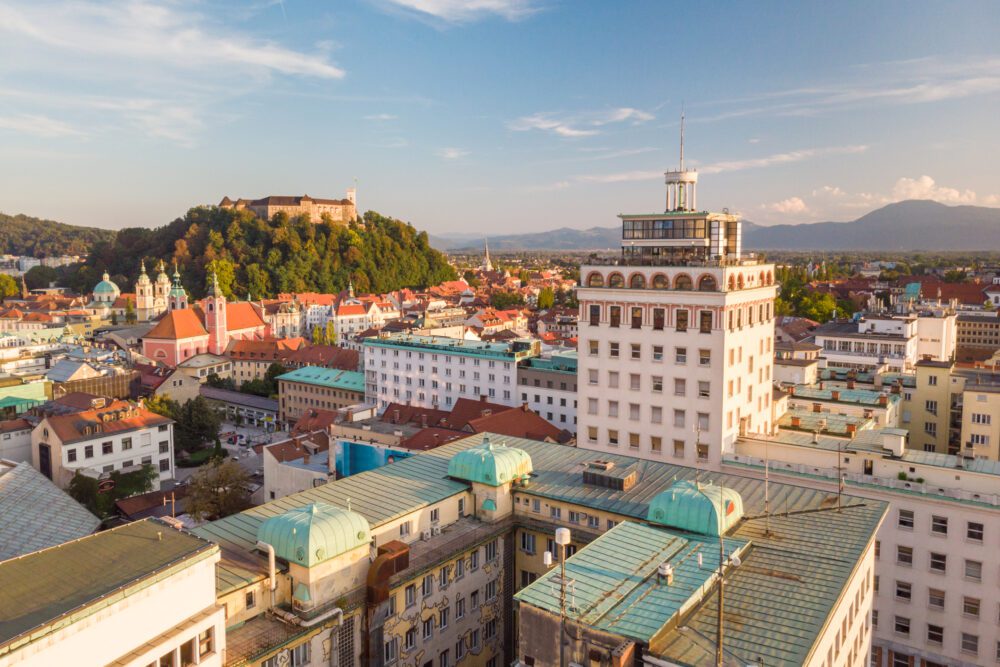
The Skyscraper, known locally as Neboticnik, is an architectural marvel and a prominent feature of Ljubljana’s skyline. Built in the 1930s, it was the first high-rise building in Ljubljana and one of the tallest structures in the Balkans at the time. Designed by architect Vladimir Šubic in the Art Deco style, the Skyscraper stands as a testament to the city’s modernist architectural heritage. Rising 70 meters above ground, the building offers panoramic views of the city and the surrounding mountains from its rooftop terrace. Originally constructed as a mixed-use building with residential apartments, offices, and shops, the Skyscraper has retained much of its original character and charm, making it a beloved landmark in the heart of Ljubljana.
To experience the breathtaking views from the Skyscraper’s rooftop terrace, visitors can take the elevator to the top floor and then climb a short flight of stairs to reach the observation deck. From here, you can enjoy stunning vistas of Ljubljana’s historic old town, the Ljubljanica River, and the Julian Alps in the distance. Be sure to bring your camera to capture the panoramic scenery and the architectural details of the building itself. After taking in the views, consider exploring the ground-floor cafe and restaurant, which offer a cosy atmosphere and delicious food and drinks.
National Gallery of Slovenia
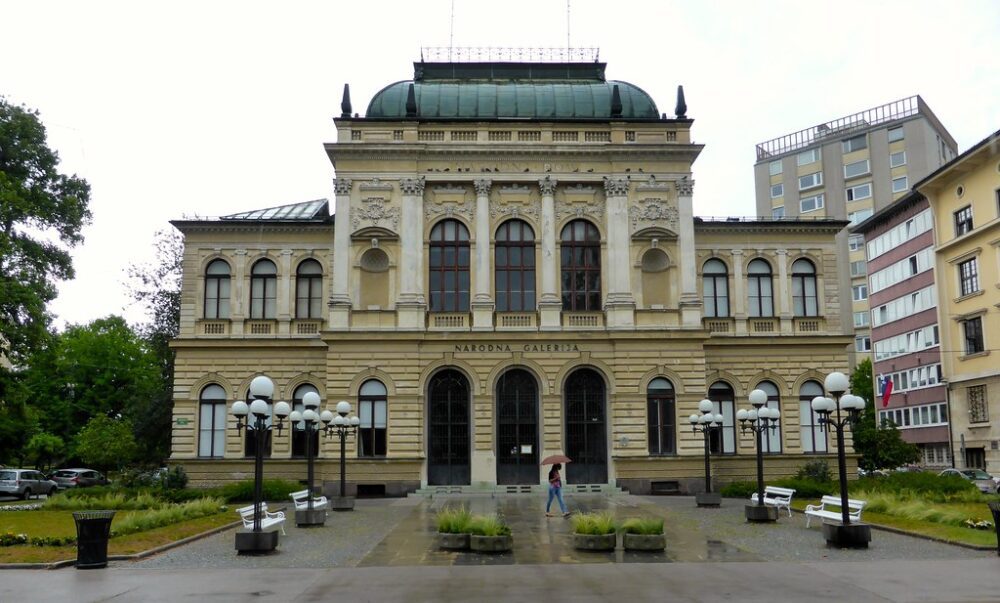
The National Gallery of Slovenia, located in Ljubljana’s historic city centre, is the country’s premier art museum, showcasing an extensive collection of Slovenian and European art from the Middle Ages to the 20th century. Founded in 1918, the museum is housed in the stunning neo-Renaissance palace, which was originally built in the late 19th century as the seat of the Carniolan Provincial Assembly. The gallery’s collection includes works by renowned Slovenian artists such as Ivan Grohar, Rihard Jakopic, and Zoran Mušic, as well as notable European painters such as Rubens, Rembrandt, and Van Gogh. Visitors can explore a diverse range of artistic styles and movements, from medieval religious art to modernist and contemporary works, providing insight into Slovenia’s rich cultural heritage and artistic traditions.
When visiting the National Gallery of Slovenia, consider taking a guided tour to gain a deeper understanding of the artworks and their historical significance. Guided tours are available in multiple languages and offer valuable insights into the museum’s collection and exhibitions. Additionally, be sure to check the museum’s website for information on current exhibitions, special events, and temporary installations. Don’t miss the opportunity to explore the museum’s permanent collection, which is arranged thematically and chronologically, allowing visitors to trace the evolution of Slovenian and European art over the centuries.
Tivoli Park

Tivoli Park, nestled in the heart of Ljubljana, is a verdant oasis that offers a tranquil escape from the bustling city streets. Established in 1813, Tivoli Park is one of the oldest public parks in Slovenia and spans over 5 square kilometres, making it the largest green space in Ljubljana. The park’s picturesque landscape features lush greenery, winding pathways, charming ponds, and vibrant flower beds, providing a serene environment for leisurely walks, picnics, and outdoor activities. Visitors can explore the park’s numerous attractions, including the Tivoli Castle, which houses the International Center of Graphic Arts, and the Tivoli Hall, a cultural and congress centre known for its diverse events and performances. Tivoli Park is also home to several playgrounds, sports facilities, and outdoor cafes, making it a popular destination for families, joggers, cyclists, and nature enthusiasts alike.
When visiting Tivoli Park, take some time to explore its various trails and pathways, which offer scenic views of the surrounding landscape and architectural landmarks. Consider renting a bicycle or rollerblades to cover more ground and explore the park’s hidden gems at your own pace. Be sure to visit the Tivoli Pond, a serene oasis surrounded by lush vegetation and home to ducks, swans, and other wildlife. For a relaxing break, stop by one of the park’s cafes or ice cream stands and enjoy a refreshing drink or snack amidst the tranquil surroundings.
Metelkova Mesto

Metelkova Mesto, a vibrant cultural centre located in the heart of Ljubljana, is a testament to the city’s creative spirit and alternative culture. Originally a military barracks complex dating back to the Austro-Hungarian Empire, Metelkova was abandoned in the early 1990s after Slovenia gained independence. However, instead of falling into disrepair, the complex was revitalized by a group of artists and activists who transformed it into a dynamic urban space filled with colourful street art, avant-garde galleries, underground clubs, and alternative performance venues. Today, Metelkova Mesto serves as a hub for independent artists, musicians, and creatives, hosting a wide range of cultural events, exhibitions, and concerts throughout the year. Visitors can explore the eclectic mix of galleries, studios, and performance spaces that showcase the diversity and creativity of Ljubljana’s contemporary art scene.
When visiting Metelkova Mesto, be sure to explore its labyrinthine streets and alleyways, which are adorned with vibrant murals, graffiti, and sculptures created by local and international artists. Take some time to browse the independent galleries and studios that line the complex, where you can discover cutting-edge contemporary art and interact with the artists themselves. In the evening, immerse yourself in the lively nightlife scene by checking out one of the underground clubs or live music venues that host an array of concerts, DJ sets, and performance art shows.
Dragon Bridge (Zmajski Most)
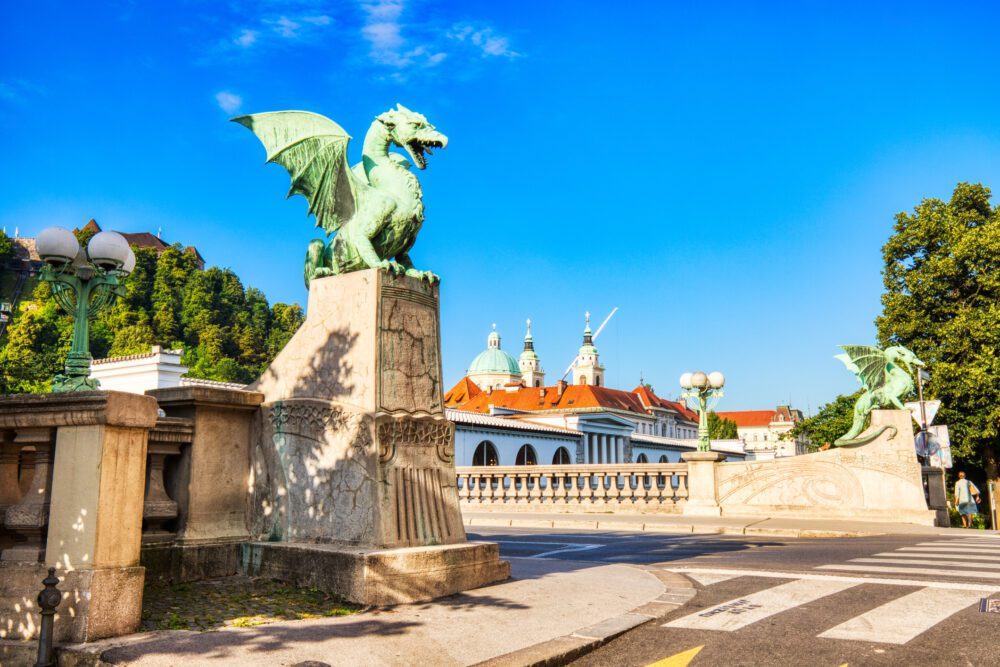
Dragon Bridge, a striking symbol of Ljubljana’s architectural heritage, is adorned with dragon statues that have become iconic symbols of the city. Built-in the early 20th century, the bridge replaced an older wooden structure and was designed by architect Jurij Zaninovich in the Art Nouveau style, incorporating elements of Slovenian mythology and symbolism. The bridge is adorned with four magnificent dragon statues, which are said to symbolize power, strength, and protection. Legend has it that dragons once inhabited the nearby Ljubljana Marshes, and their presence on the bridge serves as a reminder of the city’s mythical past. Today, the Dragon Bridge is not only a popular tourist attraction but also a vital transportation link that connects the city centre with the bustling districts on the other side of the Ljubljanica River.
When visiting Dragon Bridge, be sure to take some time to admire the intricate details of the dragon statues and the beautiful Art Nouveau decorations that adorn the bridge. Consider crossing the bridge on foot to fully appreciate its architectural beauty and panoramic views of the surrounding area. For the best photo opportunities, visit the bridge during the early morning or late afternoon when the light is soft and golden, casting a warm glow on the dragon statues and the river below. Additionally, take a leisurely stroll along the riverbank and explore the charming cafes, shops, and galleries that line the picturesque Ljubljanica River.
Central Market

The Central Market, known locally as “Osrednja Ljubljana tržnica,” is a bustling hub of activity located in the heart of Ljubljana’s historic city centre. Dating back to the early 20th century, the market has been a vital part of the city’s culinary and cultural scene for over a century. Originally established in 1895, the market underwent significant renovations in the 1930s, resulting in the construction of the iconic covered market halls that still stand today. The market is divided into two main sections: the Open Market, which features rows of stalls selling fresh fruits, vegetables, flowers, and other local produce, and the Covered Market, where visitors can find a wide range of speciality foods, artisanal products, and traditional Slovenian delicacies. With its vibrant atmosphere, colourful displays, and diverse array of offerings, the Central Market provides a sensory feast for visitors and locals alike.
When visiting the Central Market, arrive early in the morning to experience the market at its liveliest and to enjoy the freshest produce available. Wander through the stalls and interact with the friendly vendors, who are always happy to share their knowledge and offer samples of their delicious products. Be sure to try some of the local specialities, such as freshly baked bread, artisanal cheeses, cured meats, and homemade pastries. Additionally, take some time to explore the Covered Market, where you can browse through the stalls selling traditional Slovenian foods, spices, olive oils, wines, and handicrafts. Don’t forget to bring cash, as many vendors may not accept credit cards, and be prepared to haggle for the best deals, especially if you’re buying in bulk.
Ljubljana Cathedral (Cathedral of St. Nicholas)
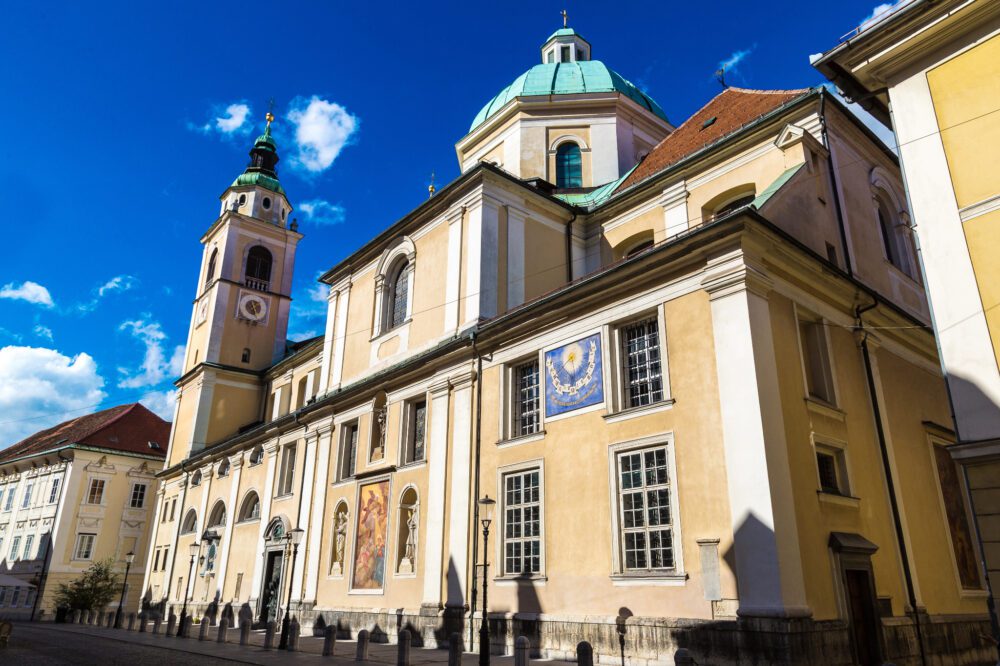
Ljubljana Cathedral, also known as St. Nicholas’s Church, stands as a magnificent example of Baroque architecture in the heart of Slovenia’s capital city. Originally built in the early 13th century, the cathedral has undergone several renovations and expansions throughout its history, with its current appearance largely influenced by the Baroque style in the 18th century. The cathedral’s stunning facade, adorned with intricate sculptures and decorative elements, is a testament to the skill and craftsmanship of the artisans who contributed to its construction. Inside, visitors can admire the richly decorated interior, featuring ornate altars, beautiful frescoes, and a majestic dome that towers above the nave. The cathedral is also home to a collection of religious artefacts and artwork, including paintings, sculptures, and religious relics, providing insight into Slovenia’s cultural and religious heritage.
Practical tip: When visiting Ljubljana Cathedral, take some time to explore its impressive exterior and interior details, including the intricately carved stone sculptures and the beautiful stained glass windows. Consider joining a guided tour or attending a religious service to learn more about the cathedral’s history and significance. Be mindful of the cathedral’s opening hours and any religious services or events that may be taking place during your visit. Additionally, don’t forget to dress modestly and respectfully, especially if you plan to enter the cathedral for prayer or reflection.
Ljubljanica River

Flowing through the heart of Ljubljana, the Ljubljanica River is not just a waterway but an integral part of the city’s identity and charm. Historically, the river played a crucial role in the development and prosperity of Ljubljana, serving as a trade route and providing access to the Adriatic Sea. Today, it is a beloved recreational area where locals and visitors alike gather to relax, socialize, and enjoy the beauty of the city. One of the best ways to experience the Ljubljanica River is by taking a leisurely boat cruise, offering a unique perspective of Ljubljana’s historic landmarks and picturesque bridges. Several operators offer guided boat tours along the river, providing informative commentary about the city’s history, architecture, and cultural significance. Whether you opt for a daytime excursion or a romantic evening cruise, a boat tour on the Ljubljanica River promises a memorable and scenic experience.
For those seeking a more active adventure, stand-up paddleboarding (SUP) on the Ljubljanica River offers a fun and invigorating way to explore the city from a different vantage point. SUP enthusiasts can rent equipment from various rental shops along the riverbank and paddle at their own pace, soaking in the sights and sounds of Ljubljana’s waterfront. With its calm waters and gentle currents, the Ljubljanica River provides an ideal environment for paddleboarding, suitable for beginners and experienced paddlers alike. As you glide along the river, you’ll have the opportunity to admire the city’s skyline, historic buildings, and lush greenery lining the riverbanks.
House of Illusions
The House of Illusions, located in the heart of Ljubljana’s Old Town, offers a captivating journey into the world of optical illusions and mind-bending experiences. Founded in 2002, the museum has become a popular attraction for visitors of all ages, providing a fascinating blend of art, science, and psychology. The museum features a series of interactive exhibits and installations designed to challenge perception and stimulate the imagination. From rooms that appear to defy gravity to mind-bending sculptures and holographic displays, each exhibit offers a unique and immersive experience that will leave visitors questioning their senses. The House of Illusions is not only entertaining but also educational, offering insights into the workings of the human brain and the mysteries of visual perception.
Practical tip: When visiting the House of Illusions, be prepared to spend at least an hour exploring the various exhibits and installations. Consider purchasing tickets in advance to avoid long queues, especially during peak tourist seasons. Remember to bring your camera or smartphone to capture some memorable photos and videos of your experiences inside the museum. It’s also a good idea to visit with friends or family members, as many of the exhibits are interactive and are more enjoyable when shared with others.
Plečnik House
The Plečnik House, located in Ljubljana’s Trnovo neighbourhood, offers a fascinating glimpse into the life and work of Slovenia’s most renowned architect, Jože Plečnik. The house, where Plečnik lived and worked from 1921 until his death in 1957, has been meticulously preserved as a museum dedicated to his legacy. Designed by Plečnik himself, the house reflects his distinctive architectural style, characterized by a harmonious blend of classical and modern elements. Visitors to the Plečnik House can explore the architect’s private living quarters, including his studio, bedroom, and library, as well as an exhibition space showcasing his sketches, models, and personal belongings. The museum offers valuable insights into Plečnik’s creative process, his innovative approach to architecture, and his profound influence on the urban landscape of Ljubljana.
When planning a visit to the Plečnik House, be sure to check the museum’s opening hours in advance, as they may vary depending on the season. Guided tours are available for those interested in learning more about Plečnik’s life and work, providing in-depth commentary and context to the exhibits. Photography is permitted inside the museum, so don’t forget to bring your camera to capture some memorable moments. After exploring the Plečnik House, take some time to stroll through the surrounding Trnovo neighbourhood, known for its charming streets, historic buildings, and vibrant atmosphere.
Day Trip to Postojna Cave
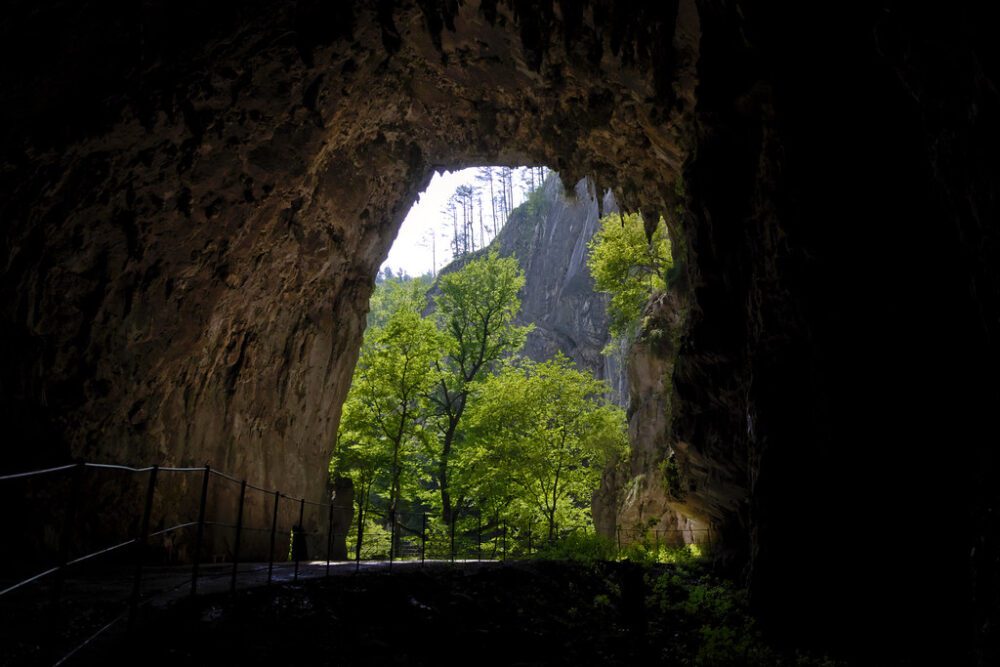
A day trip to Postojna Cave promises an unforgettable adventure into the mesmerizing underworld of Slovenia’s karst landscape. Carved out over millions of years by the Pivka River, Postojna Cave is one of the most extensive cave systems in the world, spanning over 24 kilometres of subterranean passages, chambers, and galleries. The cave’s history dates back to ancient times, with evidence of human habitation and exploration dating back to prehistoric periods. Today, visitors can embark on guided tours of the cave, admiring its breathtaking stalactites, stalagmites, and other geological formations sculpted by nature’s hand over millennia. One of the highlights of the tour is a ride on the cave’s underground railway, which takes visitors deep into the heart of the cave, providing a unique and immersive experience of its vast interior.
When planning a day trip to Postojna Cave, it’s advisable to book tickets for the guided tour in advance, especially during peak tourist seasons, to avoid long queues. The cave’s temperature remains constant throughout the year, so be sure to dress appropriately with comfortable clothing and sturdy footwear suitable for walking on uneven terrain. Photography is permitted inside the cave, so don’t forget to bring your camera to capture the stunning natural wonders on display. After exploring the cave, visitors can also visit nearby attractions such as Predjama Castle, a picturesque medieval fortress perched atop a towering cliff just a short distance from Postojna Cave.
Day Trip to Lake Bled

A day trip to Lake Bled is a journey into the picturesque beauty and rich history of Slovenia’s most iconic natural attraction. Set against the backdrop of the Julian Alps, Lake Bled is renowned for its stunning emerald-green waters, tranquil atmosphere, and the fairy-tale charm of Bled Island, crowned by the enchanting Assumption of Mary Church. The history of Lake Bled dates back centuries, with evidence of human settlement in the area dating back to prehistoric times. In medieval times, Bled Castle was built on a cliff overlooking the lake, serving as a strategic fortification and later as a residence for noble families. Today, visitors can explore the castle’s museum and enjoy panoramic views of the lake and surrounding countryside from its terraces.
When planning a day trip to Lake Bled, consider arriving early in the morning to avoid crowds and secure parking near the lake. One of the best ways to experience the lake’s beauty is by taking a leisurely stroll along the scenic lakeside promenade, which offers stunning views of the water and the towering peaks of the Julian Alps. For a truly unforgettable experience, consider renting a traditional wooden pletna boat to visit Bled Island and explore its historic church and picturesque surroundings. Afterwards, take some time to relax on the shores of the lake, perhaps indulging in a delicious slice of Bled cream cake, a local delicacy enjoyed by visitors and locals alike.
Conclusion
Ljubljana offers a delightful blend of history, culture, and natural beauty that captivates visitors from around the world. From exploring the medieval charm of Ljubljana Castle and wandering through the cobblestone streets of the Old Town to immersing oneself in the vibrant atmosphere of Tivoli Park and experiencing the awe-inspiring wonders of Postojna Cave and Lake Bled, there’s something for everyone in Slovenia’s charming capital city. Whether you’re drawn to its rich history, stunning architecture, or breathtaking landscapes, Ljubljana’s diverse array of attractions ensures an unforgettable experience for travellers of all interests and ages.
As you plan your visit to Ljubljana, be sure to take advantage of the practical tips and recommendations provided to make the most of your time in this enchanting city. Whether you’re embarking on guided tours, indulging in local cuisine, or simply strolling through the city’s picturesque streets, Ljubljana promises a truly memorable journey filled with discovery, adventure, and unforgettable moments. So pack your bags, immerse yourself in the charm of Ljubljana, and prepare to create memories that will last a lifetime in one of Europe’s most enchanting destinations.
